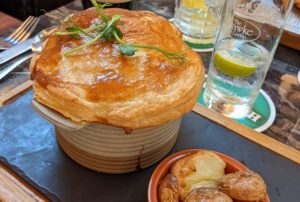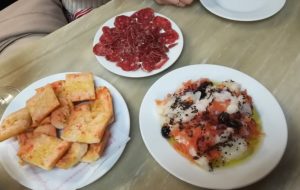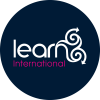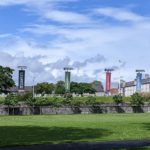My official title at the field school is intern, the duties therein required of me as an intern have required me to assume many different roles: student, teacher (facilitator), trip supervisor, and tour guide to name a few.
Student:
Though I am given more responsibilities than the non interns, first and foremost I am still a student learning how to operate at an archaeological excavation. In order to have the most in depth education possible, the two other interns and I were assigned a mentor and an area of excavation. My mentor is the cutting 7 supervisor; my area then of course is cutting 7. A cutting refers to a specifically designated area of archaeological investigation. The focus of investigations for cutting 7 this summer are specifically in quadrants C and D. Cutting 7 quadrants C and D, makeup an area approximately 8 meter (east to west) by 6/6.5 meter (north to south) located at what would have been the intersection of the north and west range of buildings of the Blackfriary.
One of the most important things I’ve come to learn so far is that archaeology, as fun as digging can be, is more paperwork than it is actual digging. As tedious as the paperwork may sometimes seem, it is imperative that it be done. As archaeology is in truth a destructive science all of the paperwork is written and photographic record of what it some cases will be gone forever. For instance, in cutting 7 a burnt deposit, which we labeled feature 773, was discovered, photographed, sampled, and excavated to it fullest extent, photographed again, and then gone. All of the written descriptions and photographs and the samples are the only remaining evidence that feature 773 ever existed.
Teacher:
The presence of students has given me the opportunity to test what I’ve learned about proper procedures and methods of excavation at the Blackfriary. You never know how much you’ve learned until you’ve been given the task of teaching someone else. It’s kind of weird at first to be tasked with imparting knowledge that seems like common sense, something that’s so ingrained it can just be done without really pondering over. For example, writing out a finds tray, I know that I need to put a single piece of tape on the outside of the tray to be labeled in black sharpie with the museum number, site name, cutting number, feature number, date, and excavator’s/supervisor’s initials.
A new student has to be taught something as simple as what information is necessary on the label and in what order. Other methods I have had the chance to teach new students include: using the dumpy level and staff to take levels, using long tapes and known grid points to take coordinates, archaeological planning (by taking coordinate points and by planning frame).
Trip Supervisor:
The other interns and I were charged with co-supervising student trips to Dublin, Loughcrew, and a multi stop tour of the Boyne Valley.
Tour Guide:
As an intern and a returning alumni of the field school, I’d like to think that I’ve accrued quite a bit of knowledge about the background/history of the site and its relation to the town of Trim. It was fun to be able to test the knowledge I’ve accumulated and to introduce new students to the site and to the town. I also had the pleasure of guiding people from Trim around the archaeology site.
– Kelsey Gamble, U.S.A
